4 Best Ways to Benefit from VR in Construction
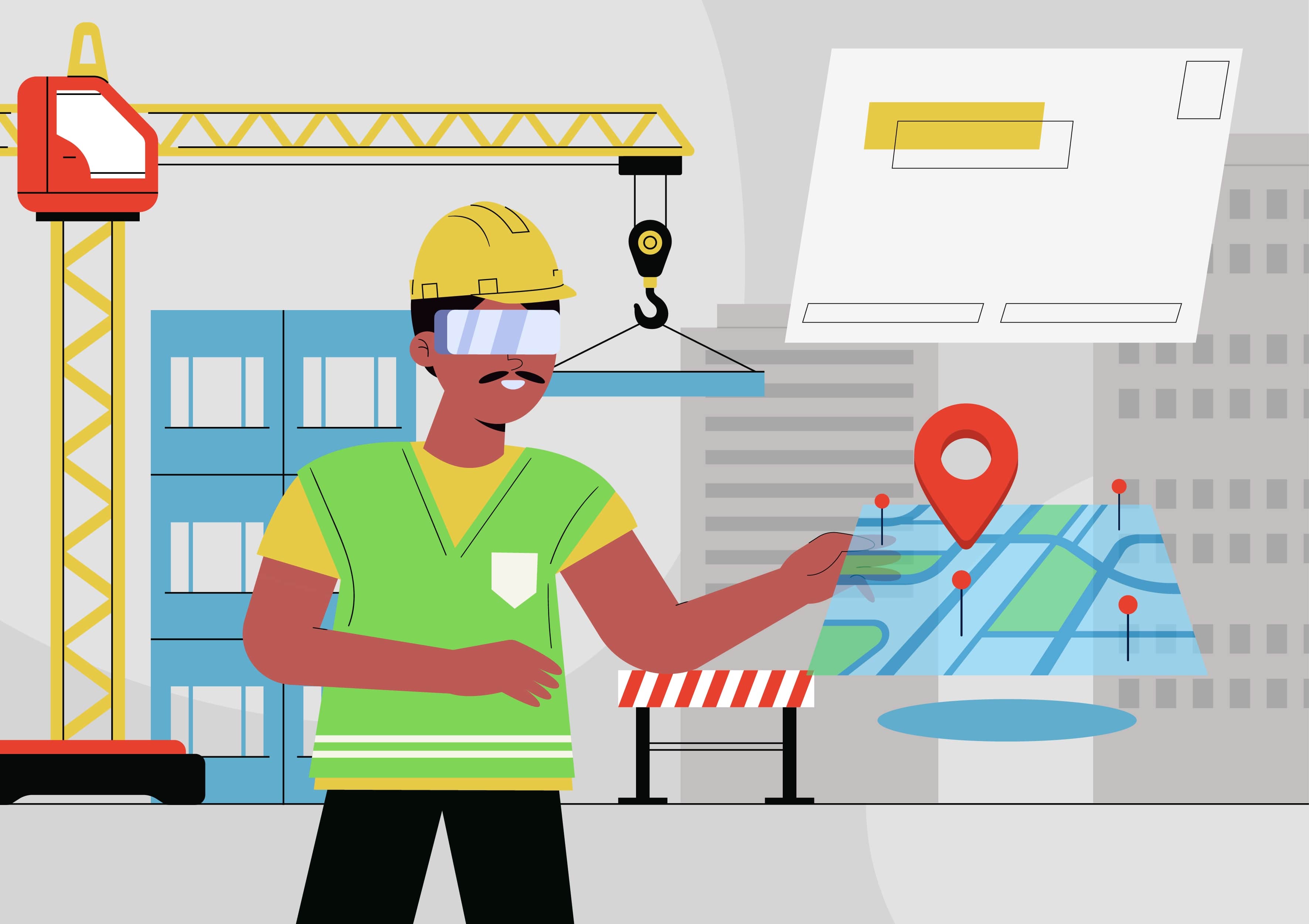
Although the construction industry has improved significantly, it’s still in desperate need of transformation and optimization. Most work is extremely dangerous, unattractive, and ineffective for construction workers. Today, many construction companies are looking for an effective solution to solve these problems. And, if you’re reading this article, you’re probably one of them.
Well, what if we told you that there’s a solution that can reduce all these problems, enhance safety, improve staff productivity, and increase profit? This solution is Virtual Reality technology.
In today’s post, we’re going to tell you how VR solves construction industry issues, show you how to benefit from VR, and demonstrate how construction companies have already leveraged VR solutions. We will show you construction VR use cases and share our experiences.
Please keep reading!
What are the benefits of using VR in construction?
Nowadays, VR is truly gaining momentum. According to the Fortune Business Insights report, the global virtual reality market is expected to grow from $6.30 billion in 2021 to $84.09 billion by 2028. Moreover, the survey of 33 top UK construction organizations found that 36% of them are planning to implement VR technology in their processes.
The demand for the use of Virtual Reality in construction is so high for a number of reasons. There are a number of substantial advantages VR solutions can bring to the construction industry. Let’s take a closer look at them.
Memorable user experience
VR makes the customer experience more comfortable, effective, and pleasant. Using this technology, you can bring your clients closer to their buildings. VR lets people make virtual visits to see how the project is going and always stay up-to-date.
Moreover, clients can virtually model buildings, rooms, and furniture to make sure it is right for them before investing in it.
Better construction management
Using Virtual Reality in construction management can bring significant improvements and advantages. VR technology allows for the building of 3D models that will contain information about the future building and provide an immersive walking around that building.
Thus, clients have an opportunity to view a clear picture of their projects instead of uninformative drawings. They can see every corner of future constructions and spot any problems before starting to build. This allows better management of the construction project, avoiding rework, overpaying, and staying on the same page with all stakeholders.
High level of training safety
Since the construction industry works in high-risk zones, even experienced professionals must train from time to time, not to mention interns. VR-based training solutions allow trainees to simulate real-life situations in a fully immersive risk-free environment.
Using a VR construction training simulator, trainees learn how to manage heavy machinery or use their tools and get valuable hands-on experience safely. Virtual reality in construction training is a great way to reduce risks, enhance safety, and increase general training level.

Lower development costs and time
Preview of the future outcomes can significantly reduce reworks, development time, and costs. Luckily, VR allows doing it. Clients can view a 3D prototype with all needed details from every angle before starting project development.
This opportunity enables detecting misconceptions in the initial stage and providing quick feedback. Thanks to this flexibility, clients can avoid any reworks and complete projects on a time and within budget.
Enhanced communication and collaboration
All construction projects involve different numbers of people who have to collaborate to complete tasks properly. However, this collaboration can be complicated for international partnerships, or construction workers can work at different times or remotely.
Implementation of VR in construction helps avoid communication issues. VR technology allows participants worldwide to meet virtually, coordinate projects, check for updates, spot issues, and make changes. The sharing of a global VR experience assures a more transparent project development process and highly productive cooperation.
4 beneficial ways to use Virtual Reality in construction
How is Virtual Reality used in construction? In this chapter, we will pay close attention to the most popular uses of VR in the construction industry and see real examples. Let’s dive in.
Virtual representation of a construction project
Drawings or renderings are a thing of the past. They provide a limited experience of the completed building. This can’t be said about building information modeling (BIM). BIM involves creating 3D models to demonstrate future buildings.
However, VR takes BIM to the next level, making its models more immersive and interactive. More precisely, now you can put your clients into a construction project as though it is actually finished and ready. By virtue of a virtual representation, people can walk around a building that has yet to actually be constructed.
This opportunity provides a clear picture of the site; clients and construction workers are on the same page, avoiding rework. Stakeholders can view every nook and cranny to find any misconceptions early so they won’t pay twice for mistakes in the future. VR takes your construction management to the next level.
For example, the Alternative-spaces team has created a detailed model of the Messe Berlin exhibition complex.
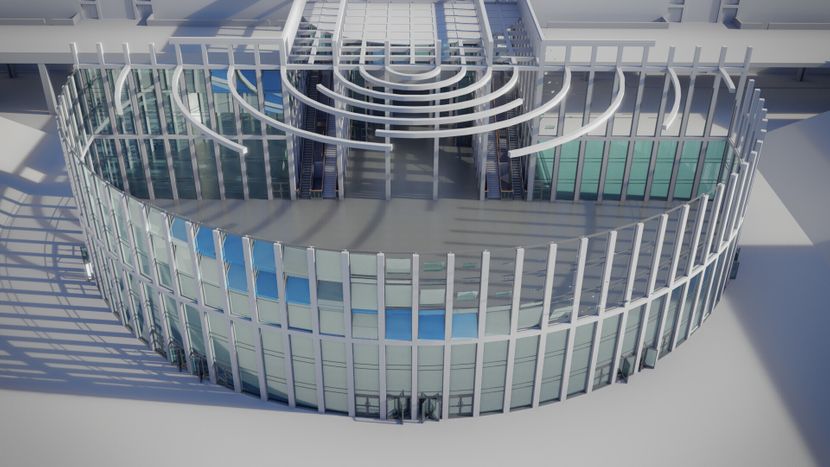
We combined and collated blueprints of buildings and prepared the subsequent models. Our experts decorated the animation with more complex effects (the appearance of stairs, windows, houses), developed our pipeline for preparing animations and rendering complex scenes, and created a choreography of parts of the building’s appearance.
Below you can see our results.
3D interior designs and virtual apartment tours
VR technology like 3D interior designs, 3D visualization, and virtual apartment tours showcase customers’ buildings in an interactive, effective, and convenient way. You can present the interior, exterior, or any other structure your clients want to see.
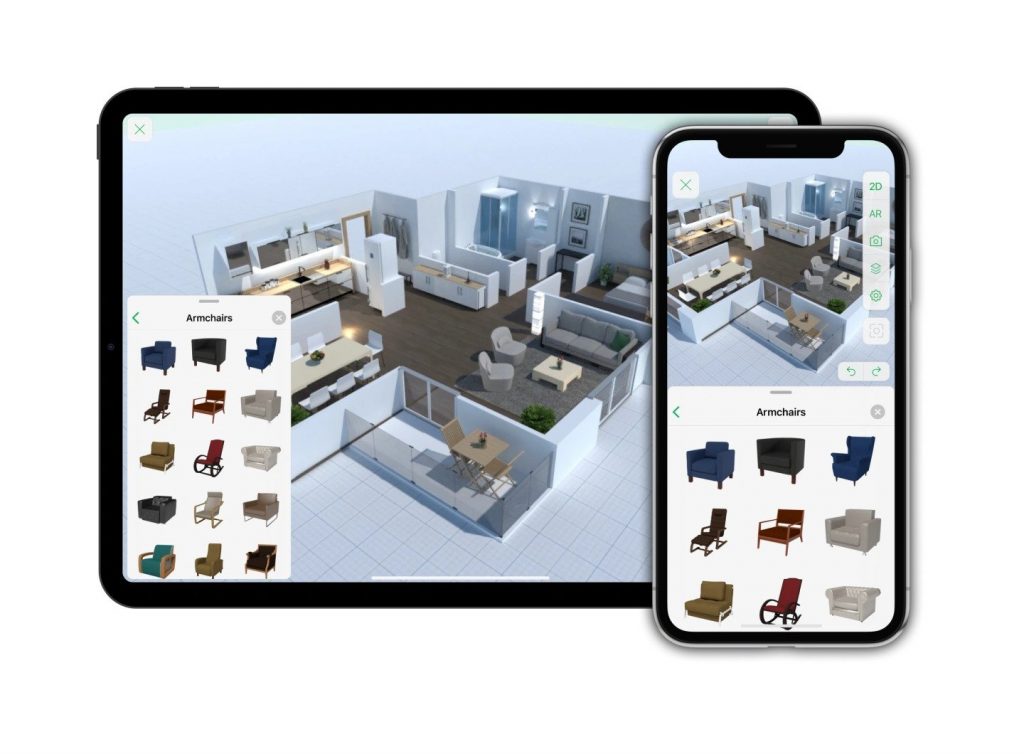
Image Source
This opportunity boosts sales significantly since clients know what they pay for. They can try different designs such as wall color, floor material, etc., and chose furniture that is most appropriate. Moreover, people can “walk around” their future apartments.
Virtual apartment tours help show clients building ideas, interior furnishings and let them stroll around a building that doesn’t exist yet. Such close interaction with a property helps to make people more loyal and convinces them to make payments.
For example, Park Central Apartments provides clients with a 360 degree virtual tour to show them all corners before purchasing. This convenient virtual tour helps you provide an enhanced customer experience that leads to closing deals faster.
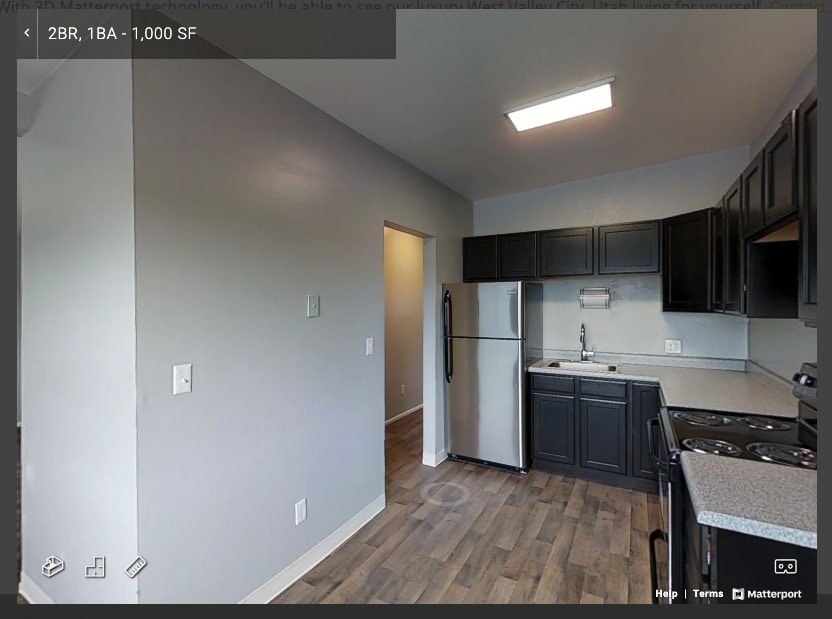
Collaborative Virtual Reality experience
One of the most vivid use cases of VR in construction is a collaborative virtual reality experience. Such shared experience allows for bridging the gap between construction workers and all stakeholders wherever they are. The virtual collaborative experience makes for a virtual conference room where people meet to discuss current issues, view project updates, and make changes.

Collaborative Virtual Reality environment is a single source of truth that provides all engaged project members the same data. Thus, contractors and clients work more effectively and productivity together, avoiding misunderstandings or errors.
Safe training of construction workers
According to research, by 2030, 23 million jobs globally will be set to use virtual reality staff training programs. And the construction industry is no exception since it’s known for being hazardous. Using virtual reality in construction training helps to provide a safe and risk-free working environment.
The VR training simulator enables construction workers to simulate complex and dangerous real-life scenarios and operate hazardous equipment without risks.
Thanks to VR technology, workers are ready for emergencies like breaks, fires, or working in bad weather conditions and to know how to act effectively.
As an example, we can show our work, namely a virtual reality simulation of the skyscraper construction site. The main idea of this VR training simulation is to let workers reproduce their work on construction sites, train their skills, and enhance safety knowledge.
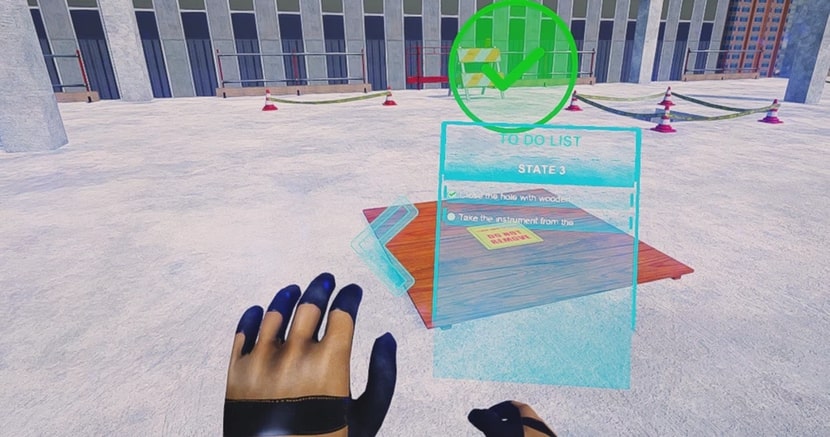
As a result, using 3D imitation and VR technology, we’ve managed to build a VR simulator that allows construction workers to reproduce dangerous situations, train their professional skills, and gain on-hand experience to be prepared for real life emergencies.
Please see the video below.
Alternative-spaces experience
Alternative-spaces is a leading development company with 20+ years of experience in delivering VR and AR solutions that meet clients’ company needs, goals, and budgets. Our services vary from product strategy, prototyping, proof of concept to 3D content creation, research and technological development (R&D), and consulting and support.
We have deep expertise in creating virtual interior design, real estate business representation, image recognition, a visualization tool for designers, and many more. Our well-qualified virtual reality developers will guide you through the entire process: from the conceptualization stage to the first live launch to help guarantee success.
Above this, we’ve shared our works, so you can be confident we have the experience to build the project of your dreams. So, if you’re ready to implement VR technology into your construction business, we can form a dedicated team that will fit your requirements and goals. Our team of experts delivers a high-quality VR product and produces excellent results while you focus on your business growth.
It’s the very time to modernize your construction business!
VR solutions have enormous potential for the construction industry. This technology has already transformed how construction businesses operate, and it’s going to continue modernizing it. And while you might be hesitating, your competitors are likely already leveraging VR technology.
The advantages include a highly interactive and super convenient customer experience, effective construction management, risk-free training to gain hands-on experience, a preview of the future outcomes to spot misconceptions at the planning stage, and productive cooperation with clients worldwide using a virtual conference room.
You can get these and many more when implementing VR solutions into your construction company.
Would you like to enrich and optimize your construction business with modern VR technology? Please get in touch with us, and our experts will assist you in building a top-tier VR solution that will take your company to the next level!
Content created by our partner, Onix-systems.
Source: https://onix-systems.com/blog/4-best-ways-to-benefit-from-vr-in-construction Home
Home